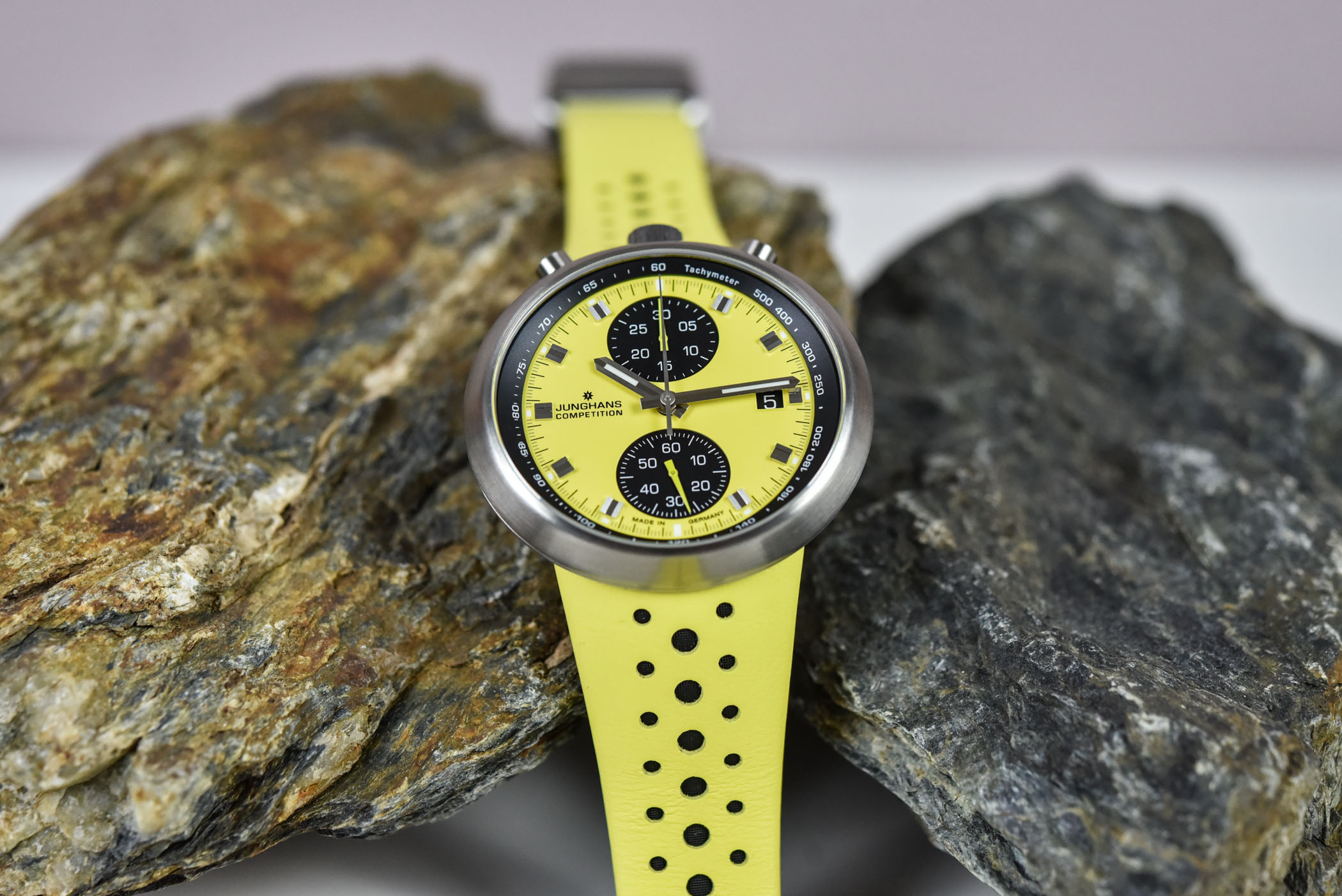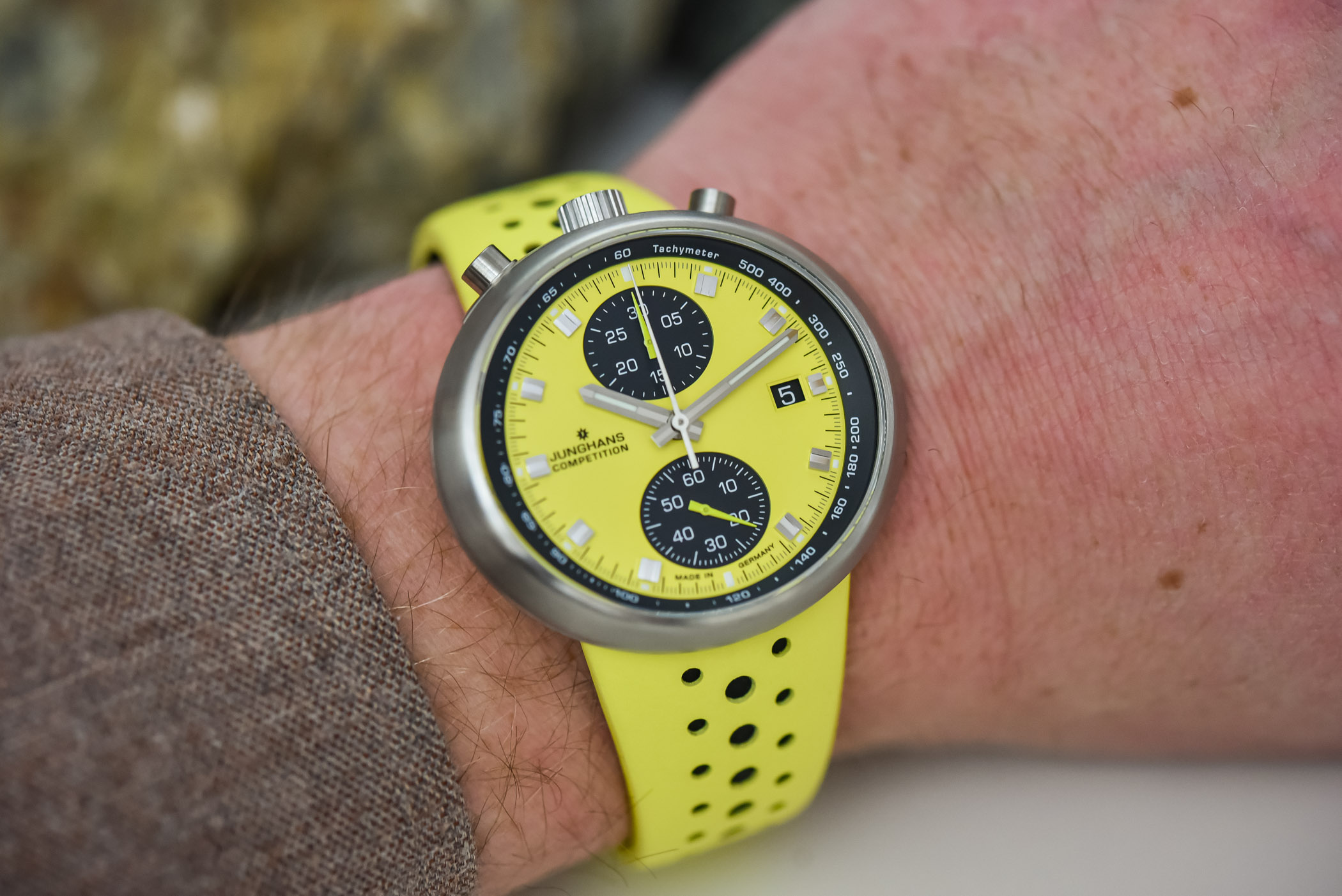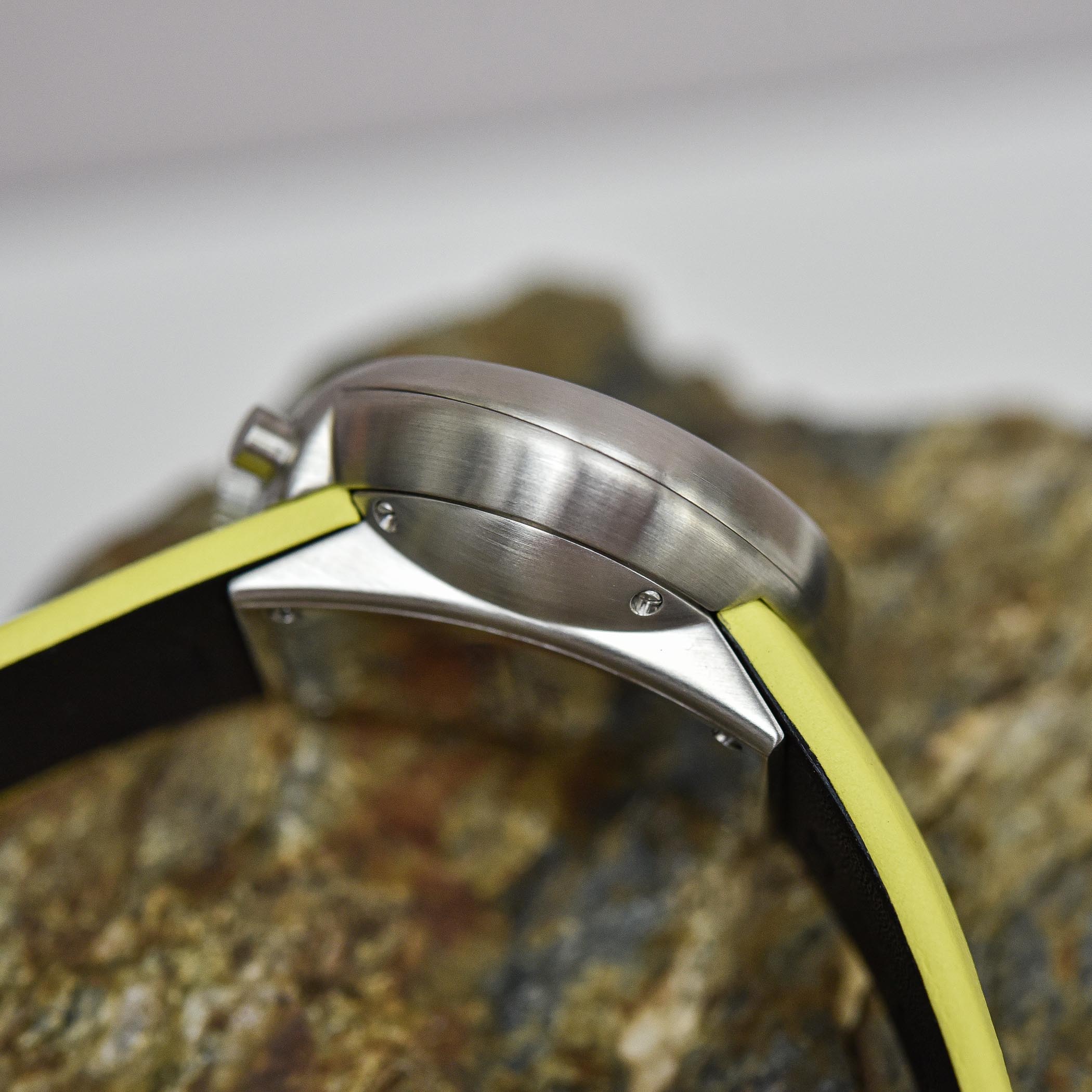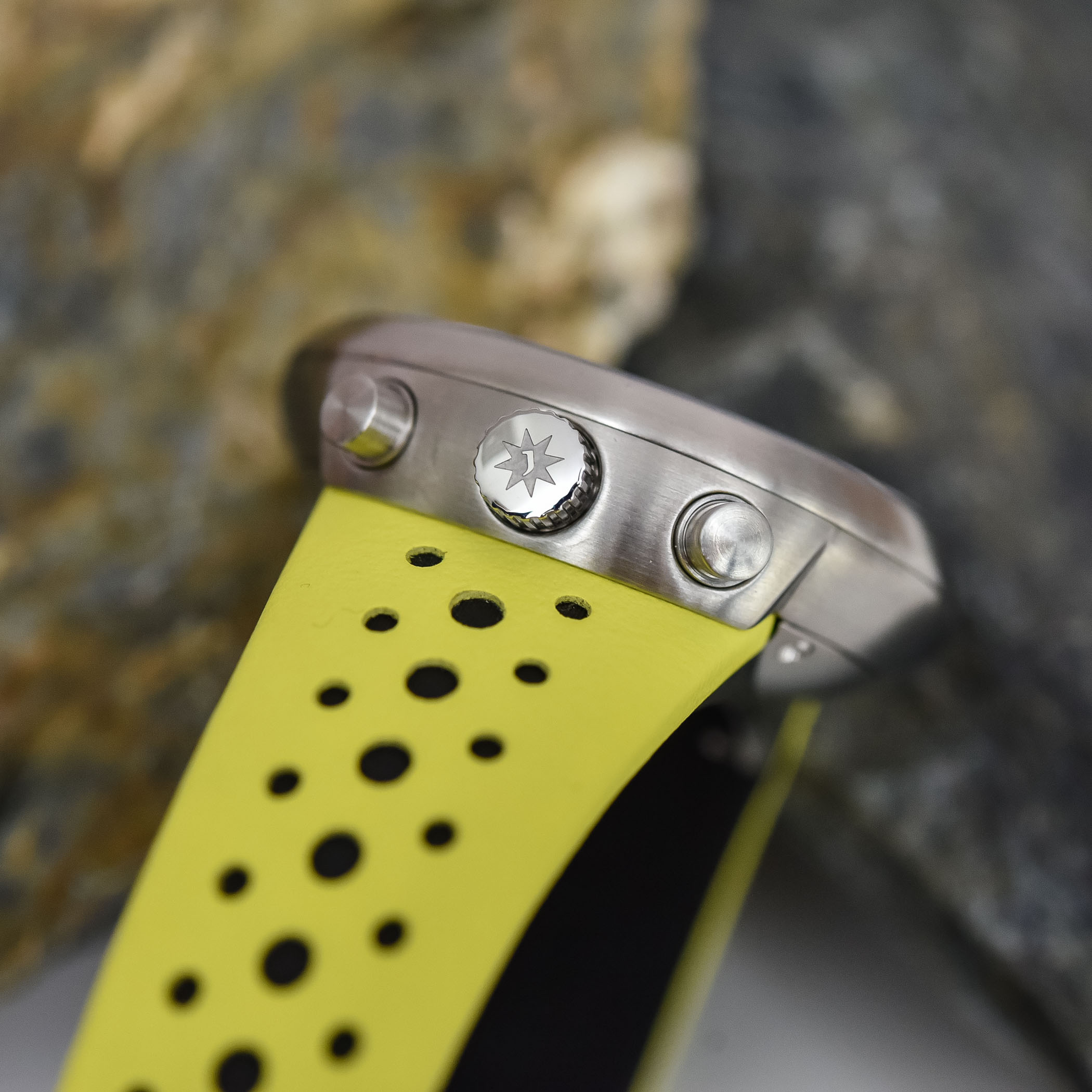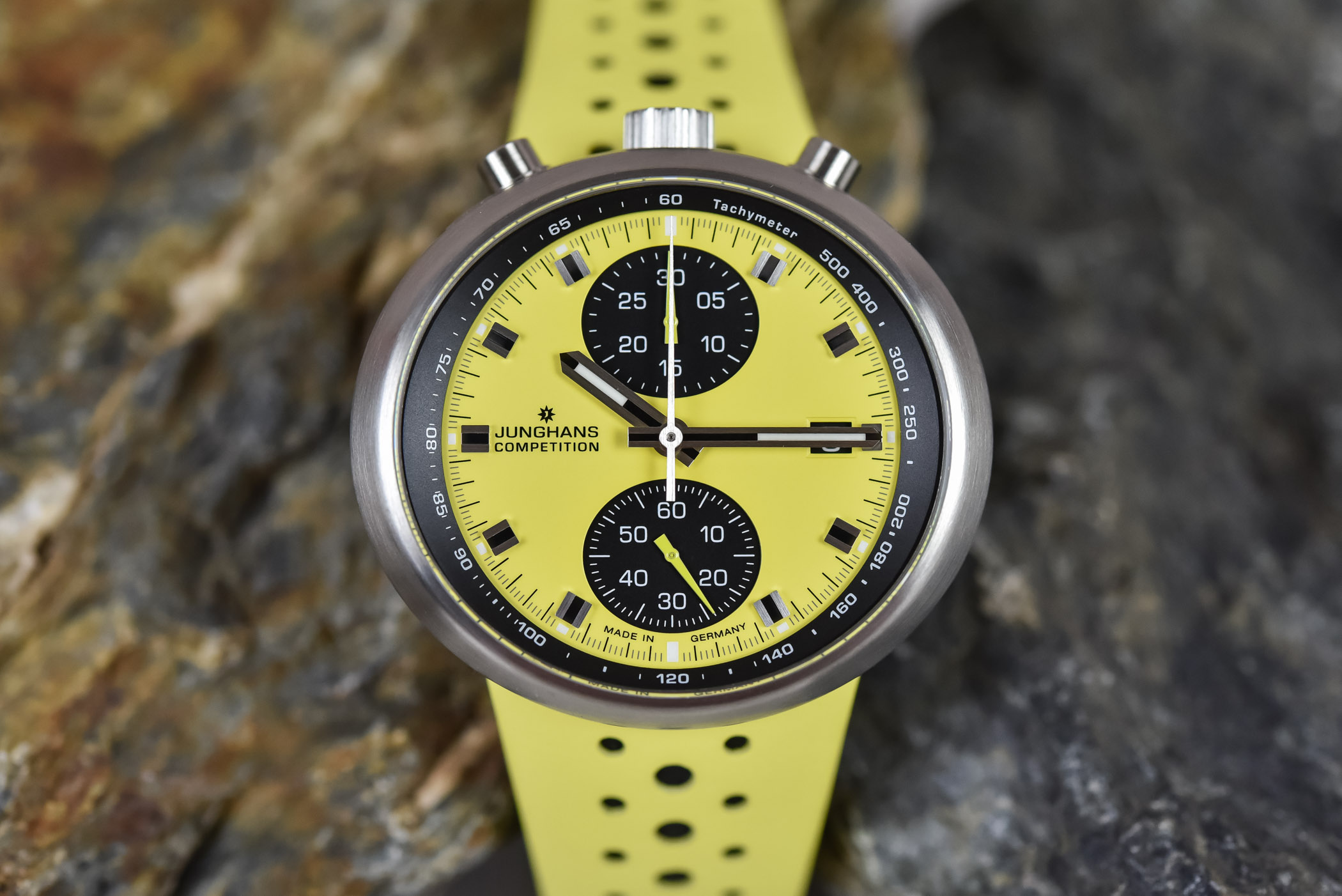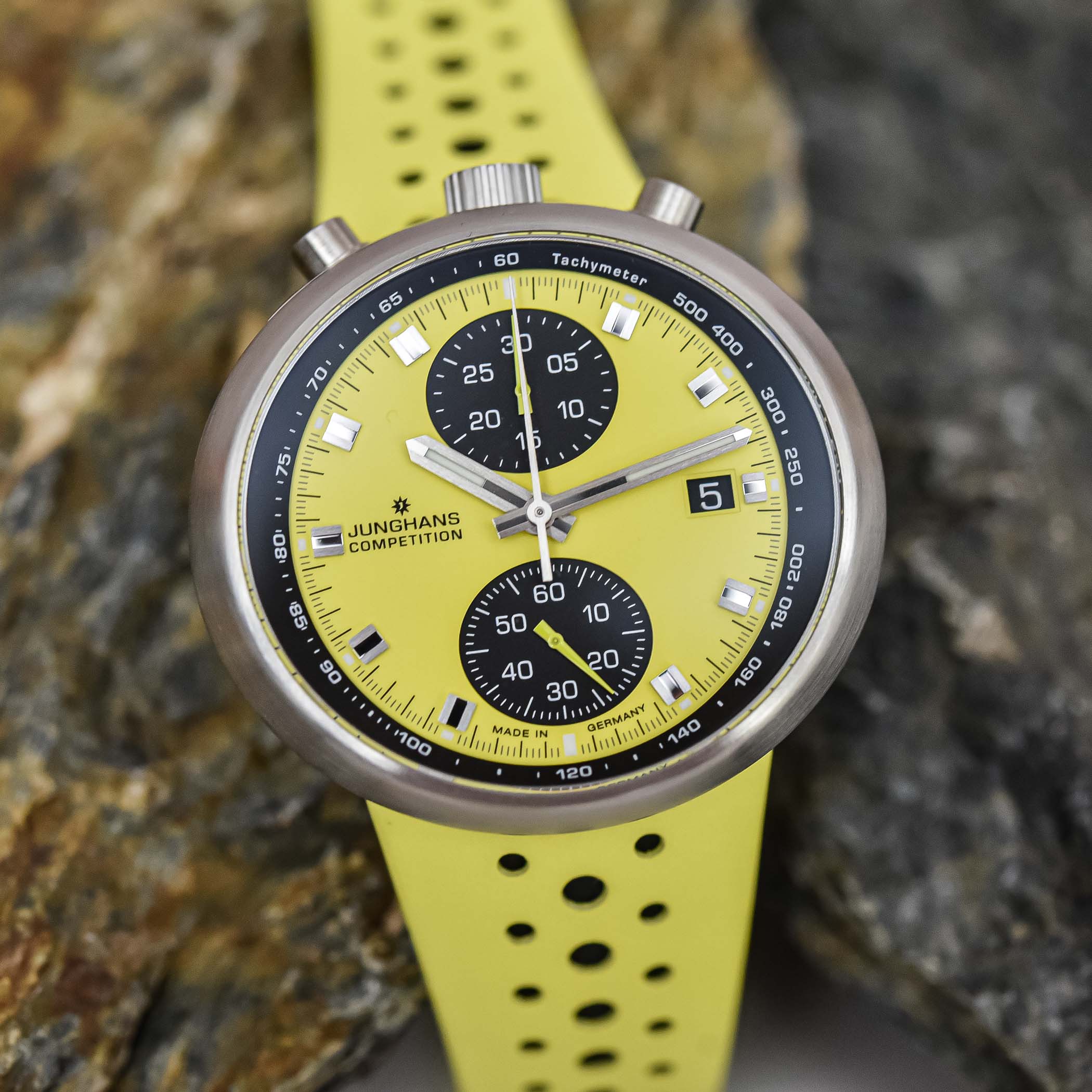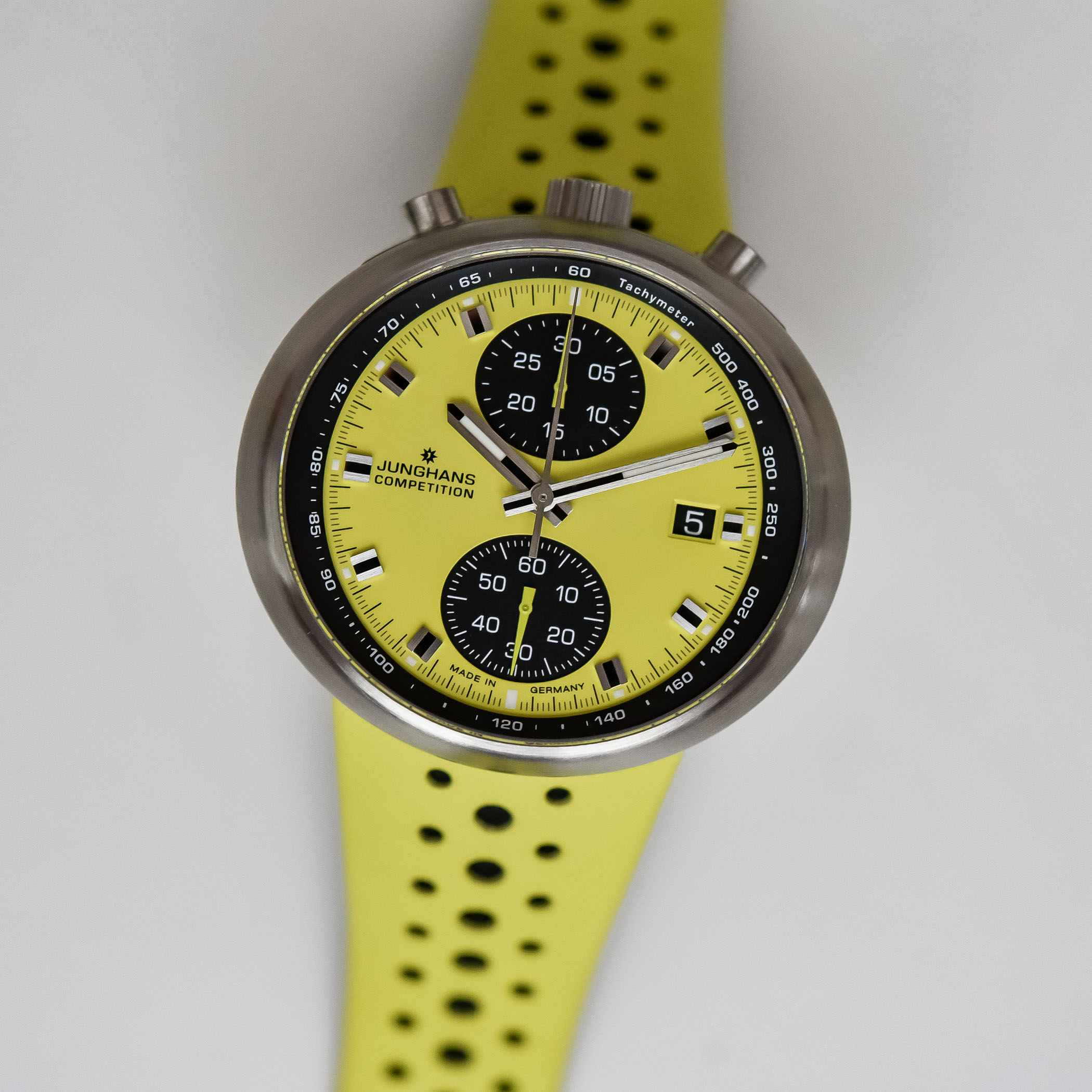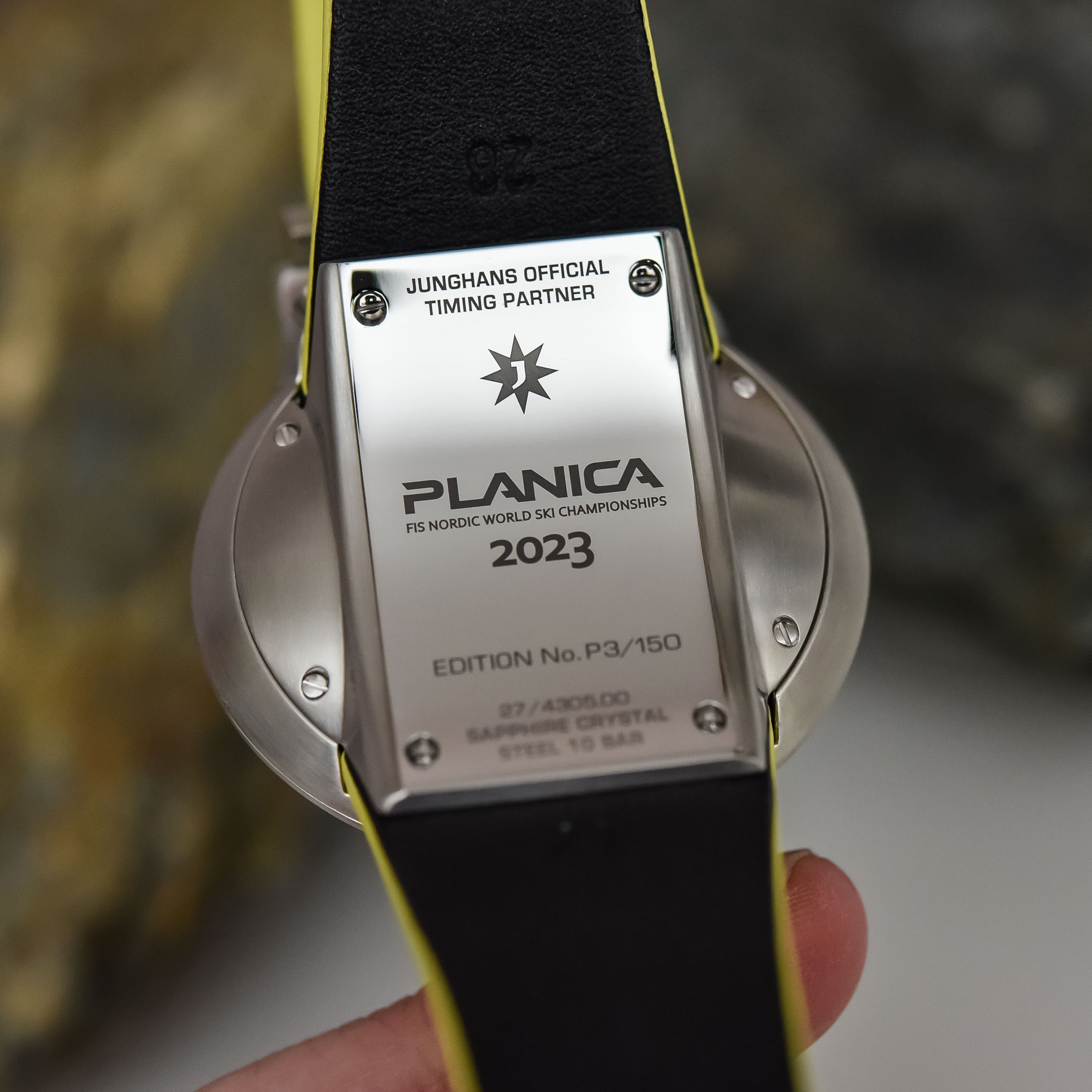Junghans Brings The Funk With The 1972 Competition FIS Edition Lemon
Hands-on with the mellow-yellow bullhead chronograph that takes us back to the 1972 Summer Olympics.
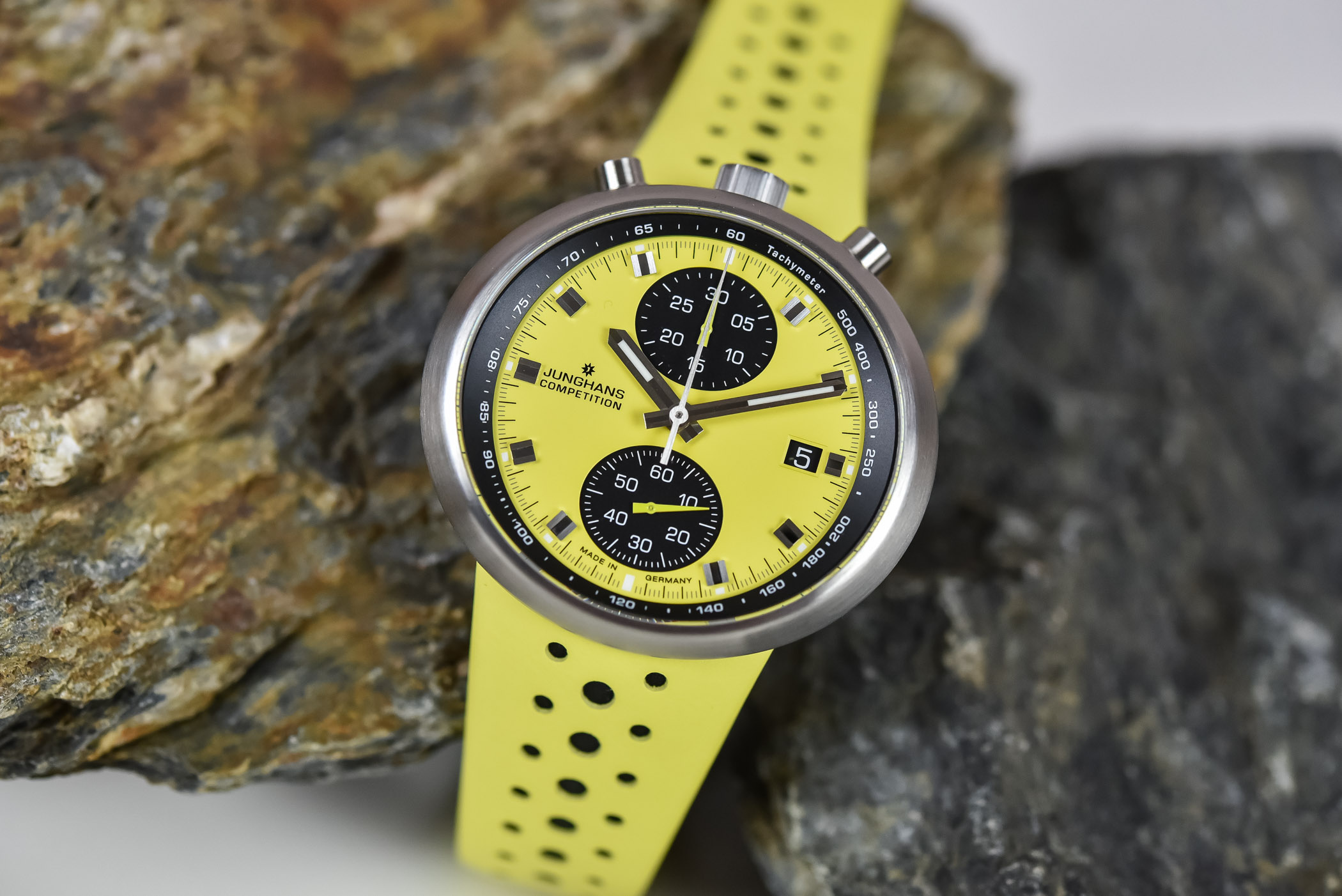
Sports events and timing instruments have always been closely linked, for obvious reasons. No longer satisfied with visually determining who came first, the pursuit of precision timing instruments consumed leading horologists of the day. The history in this field of clock and watchmaking is filled with names like Louis Moinet, Nicolas Rieussec and J.T. Winnerl, to name a few. Over time, new materials and innovations allowed for more precise measurements of time, including the game-changing advent of wrist-worn chronograph watches in the early 1900s. With the invention of digital timing devices, the need for mechanical chronographs in competitions was eliminated, but that hasn’t stopped brands from tying in with events like Formula 1 or the Olympics. And that is where Junghans enters the scene when it became one of the official timing partners for the 1972 Summer Olympics in Munich, Germany. 1972 also marked the launch of the German brand’s cool chronograph, revived last year in two special iterations. It’s now used as the basis for the Junghans 1972 Competition FIS Edition Lemon, in honour of the 2023 FIS Nordic World Ski Championship.
For the third time in a row, Junghans has partnered with the International Ski and Snowboard Federation (FIS) as the official timekeeper for the FIS Nordic World Ski Championship. This year, it’s held in Planica, Slovenia, and consists of three disciplines: cross-country skiing, ski jumping and Nordic combined. For the 2021 edition of the biannual event, Junghans celebrated this partnership with the compressor-style 1972 Automatic FIS Edition. It’s now down to the 1972 Competition to take over, with this FIS Edition Lemon as a result.
Straight out of the box, this is not your common chronograph watch, from whichever angle you look at it. The colour is funky and unique, the construction of the case is unconventional, to say the least, and the positioning of the chronograph pushers is also a touch off the beaten path. Nevertheless, it’s very well made and offers something fun and different. Once again, it is a style that originates from the 1970s and, like so many other popular watches, finds its roots in a bygone era. But this is not a watch that’s different for the sake of being different. This watch is modelled after a landmark piece made by the German manufacturer, perfectly capturing the spirit of the daring 1970s but modernised – technically – for today’s consumers.
If you were to judge this watch purely on its dimensions, you’d have to admit that it is huge. There’s no escaping the 45.5mm width and 41mm length of the case, let alone the height of 14.5mm. Thanks to its clever construction, though, it does wear rather comfortably and follows the curvature of the wrist to the point you almost forget you’re wearing it. The reason for this is two-fold, as I’ll explain. One, the pebble-shaped case has a perfectly smooth, finely brushed exterior that’s slightly tilted towards you. Two, the caseback has a large, curved central section that keeps it in check on your wrist and tucks in the strap-ends underneath the case.
The funky elliptical shape is further accentuated by the crown and pushers located at 12 o’clock, known as a Bullhead-style configuration. The pusher on the left is used to start and stop the chronograph, the right one to reset, with the screw-down crown nestled in between the two. It takes just a second to get used to, honestly. An oval-shaped sapphire crystal reveals the yellow and black dial, while the case’s unique architecture hides the movement.
It’s impossible to ignore the lemony-yellow tone of the dial. I mean, this mellow-yellow behemoth can be spotted from a mile away, so this isn’t a watch for everyone. I must admit that I warmed up to it during my time with the watch; there’s a certain appeal that is hard to pinpoint. I guess it’s the combination of the contrasting black oval sub-dials, the black tachometer flange that widens towards the sides, the applied square markers, and more. It all blends in nicely. On the left-hand side is the vintage Junghans logo, with a stepped date window opposite.
Inside is a Sellita SW500-based calibre J880.5 automatic chronograph movement, but since it’s tightly packed in the case, you just have to take my word for it. This beats at a rate of 28,800vph and offers a running time of 48 hours, which is decent. It indicates central hours and minutes, small seconds at 6 o’clock, chronograph central seconds with a 30-minute counter at 12 o’clock, and the date.
To match that mellow-yellow dial, the Junghans 1972 Competition FIS Edition Lemon comes on a pre-formed perforated rally-style leather strap in the same tone of yellow. The inside and the underside of the perforations are lined with black leather. The strap is attached somewhat unconventionally, as it is sandwiched between the case and the curved caseback. A folding clasp holds it in place, and once sized properly, the watch is very comfortable despite its dimensions. Priced at EUR 2,540, it is limited to 150 pieces.
For more information, please visit Junghans.de or check out the dedicated landing page.

